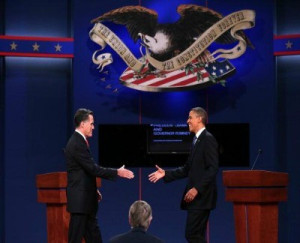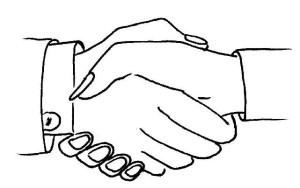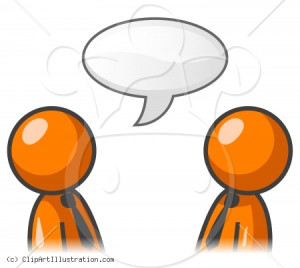 A moose and a deer walk into a bar…” We all like a good laugh – who doesn’t? – But why is that the case? This is because laughing releases endorphins; it not only literally feels good to laugh, it’s also very healing. Humor as related to health was immortalized in the Patch Adams movie about a real-life doctor, who used humor to aid the healing process. Endorphins are very powerful internal chemicals that not only make us feel good, but consequently ‘make’ us like the people who cause endorphins to be released. We like people who make us laugh.
A moose and a deer walk into a bar…” We all like a good laugh – who doesn’t? – But why is that the case? This is because laughing releases endorphins; it not only literally feels good to laugh, it’s also very healing. Humor as related to health was immortalized in the Patch Adams movie about a real-life doctor, who used humor to aid the healing process. Endorphins are very powerful internal chemicals that not only make us feel good, but consequently ‘make’ us like the people who cause endorphins to be released. We like people who make us laugh.Males who are courting females know this at some level and try to make females laugh, thereby making themselves more attractive. “He makes me laugh” is a reason largely cited in good relationships. Males relating to other males regarding humor try to ‘one up’ each other to see who can be the funniest, i.e. be the most attractive to females.
Self-depreciating humor is a great channel to use instead of put-down humor, which comes at the expense of another person, culture, or affinity group. While put-down humor can be funny to some who are in a rival affinity group, it can be very offensive to others, showing a harsh and judgmental attitude that is the opposite of funny to many. “That’s not funny.” This statement is used when somebody is not taking the situation seriously enough, or when the person is personally offended.
Self-depreciating humor, on the other hand, is only “mean” to ourselves and really shows that we are human and able to laugh at our foibles. Self-depreciating humor shouldn’t take the position of making fun at our personal traits, which can hurt self-esteem (when you tell yourself something enough, you start to believe it) and self-image (when you say a self-putdown enough, listeners may try to correct you but unconsciously start to believe it). Rather, self-depreciating humor should be more about your behavior that may have gone awry unintentionally and can be viewed as humorous as a result.
“Tell me a joke” children will ask while they are learning to understand the nuances of language. While this language learning process takes place, different ages find different things funny. “Why did the chicken cross the street? To get the other side!” was such a logical answer that I didn’t see the humor in it when I was in second grade. However, “Why did the lawyer cross the street? Because he was tied to a chicken!” struck me as hilarious as an adult, due to the illogic of the premise and to the ridiculous visual picture it creates. Another person who is not so logical or literal may not find any humor in it at all.
Children laugh several hundred times a day, with pure delight in an expression of their emotions. Adults have been trained to restrain their emotions to the point that we laugh only a couple of times a day, and some days not at all. We lose the healing aspect of humor when we fill our days instead with worry, anxiety and overtax our systems with stress. It can get to the point where it is hard to actually have a good deep therapeutic belly laugh. Laughing to the point of tears – it really does a body good.
COMMUNICATION TAKEAWAY: We all want to be liked (see prior blog post on 9/27/12) and humor can contribute greatly to likability. Attractiveness also contributes to likability, as we want to hang around with attractive people. It comes full circle when being humorous causes you to be more attractive. However using the right humor is important, as caustic, X-rated, and toilet humor may be funny only for their shock value. Self-depreciating humor as described above is endearing, while play-on-words humor is appealing to those with a strong auditory leaning. Re-training yourself to laugh at least several times a day will not just make you a healthy person, but your positive attitude will make you more enjoyable to be around.
QUESTION: Heard a good joke lately? Ever thought about WHY you thought it was so funny?




 Examples of the powerful effects of using the wrong words are in the headlines almost daily while in the height of political season. Romney says something, which gets him into trouble, recanting with “my words were taken out of context”. Obama says something that paints him in an unfavorable light, much to the horror of his advisors.
Examples of the powerful effects of using the wrong words are in the headlines almost daily while in the height of political season. Romney says something, which gets him into trouble, recanting with “my words were taken out of context”. Obama says something that paints him in an unfavorable light, much to the horror of his advisors.




